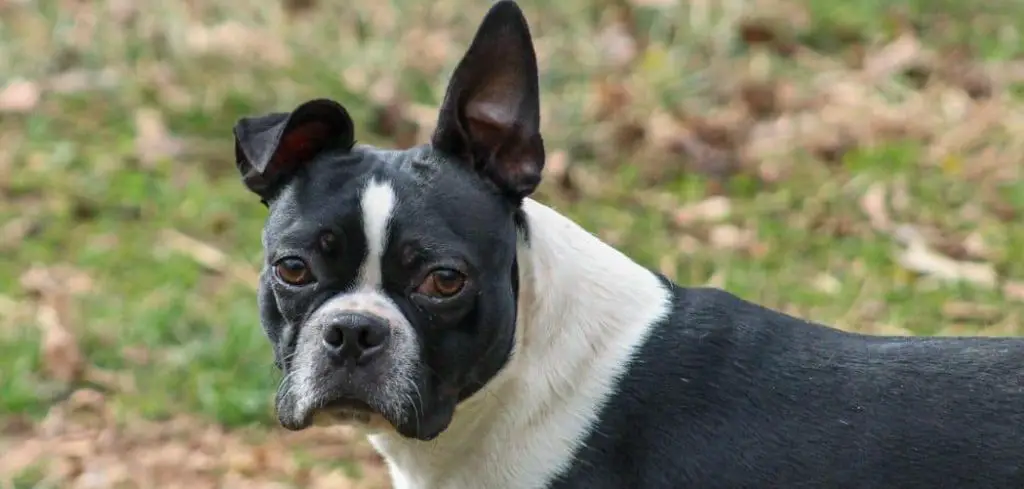It can be frightening to see your dog pass blood in their stool, especially if you also notice blades of grass mixed in.
While some dogs occasionally eat grass without issue, the presence of blood raises more serious concerns that shouldn’t be ignored.
We outline the common reasons your dog is pooping blood and grass, what you can do at home, and when to seek veterinary help.
Table of Contents
Dog Pooping Blood and Grass — Why It Happens
When a dog is pooping blood along with grass, it usually indicates irritation or injury in the digestive tract. Dogs often eat grass to soothe an upset stomach, but if the grass passes with blood, it suggests that something more serious may be going on.
Possible causes include gastrointestinal irritation from eating grass itself, parasites, infections, dietary indiscretions, colitis, or even more severe conditions like foreign body obstruction or gastrointestinal disease.
The combination of blood and grass signals both irritation and an underlying issue affecting the digestive system.

Dog Pooping Blood and Grass: Common Causes
Gastrointestinal Irritation from Eating Grass
Many dogs nibble on grass, often as a way to self-soothe nausea or stomach upset. However, grass blades can be coarse and difficult to digest, irritating the lining of the stomach or intestines.
This irritation may cause minor bleeding, leading to blood-tinged stool.
You might notice your dog straining, producing loose stools, or vomiting after eating grass.
While mild cases may pass on their own, consistent bleeding with grass in the stool is not normal and can signal a deeper gastrointestinal issue.
Read more: Dog Pooping Blood and Worms (Causes and What to do )
Parasites
Intestinal parasites such as hookworms, whipworms, and giardia are common culprits when dogs pass blood in their stool.
These parasites latch onto the intestinal walls, causing irritation, inflammation, and sometimes visible bleeding.
A dog with parasites may eat grass more frequently due to the discomfort in their stomach. Along with blood and grass in the stool, you may notice weight loss, lethargy, a dull coat, or diarrhea.
Left untreated, parasites can lead to significant health issues and require veterinary treatment.
Bacterial or Viral Infections
Infections of the gastrointestinal tract, such as parvovirus, salmonella, or bacterial overgrowth, can cause both diarrhea and bloody stool.
Dogs sometimes eat grass when they feel unwell, which may explain why you see both grass and blood together.
These infections often come with additional signs such as vomiting, fever, severe lethargy, or refusal to eat.
Because infections can progress quickly, prompt veterinary care is essential to prevent dehydration and complications.
Dietary Indiscretion or Foreign Material
Dogs are notorious for eating things they shouldn’t, including sticks, bones, trash, or other indigestible items.
These objects can scrape or injure the intestinal lining, leading to blood in the stool. If grass was also eaten around the same time, it may pass along with the blood.
A dog that has ingested foreign material may strain to poop, vomit, or show signs of abdominal discomfort.
In more severe cases, an obstruction can occur, which is life-threatening and needs urgent veterinary attention.
Colitis (Inflammation of the Colon)
Colitis, or inflammation of the large intestine, is a frequent reason for dogs pooping blood.
This condition can be triggered by stress, sudden food changes, infections, or chronic digestive problems. Dogs with colitis often produce loose stools mixed with blood and mucus.
If a dog also eats grass during a colitis episode, you may notice both grass and blood appearing together in the stool.
Other symptoms include urgency to defecate, straining, and small amounts of stool passed frequently.
More Serious Digestive Conditions
In some cases, blood in the stool with grass can be a sign of more significant disease, such as inflammatory bowel disease (IBD), ulcers, or even tumors in the digestive tract.
These conditions disrupt the normal lining of the intestines, making them prone to bleeding.
Dogs affected by these conditions often show chronic symptoms such as weight loss, poor appetite, vomiting, and ongoing digestive troubles.
Any persistent case of bloody stool should be fully investigated by a veterinarian to rule out serious disease.
What to Do If Your Dog Is Pooping Blood and Grass
If your dog passes blood and grass once but otherwise seems fine, monitor them closely and prevent further grass eating.
Provide fresh water and stick to a bland diet, such as boiled chicken and rice, for a short period to soothe their digestive tract.
Make sure your dog does not have access to harmful plants, chemicals, or spoiled food that may worsen irritation. If they frequently eat grass, consider providing safe chew alternatives and ensuring their diet is balanced and complete.
If the bleeding recurs, or if your dog also shows lethargy, vomiting, diarrhea, or loss of appetite, it’s time to seek veterinary advice.
Even small amounts of blood can indicate a developing issue that requires attention.
When to Call or Visit Your Vet
Contact your veterinarian immediately if your dog:
Passes large amounts of blood
Has tarry or jelly-like stool
Vomits alongside bloody stool
Shows signs of abdominal pain, bloating, or collapse
Appears lethargic, dehydrated, or refuses food
Even mild bleeding should be checked if it happens more than once. A stool test, blood work, and imaging may be recommended to determine the cause and guide proper treatment.
Read more: Dog Pooping Blood Like Jelly (What it means for your pup)
Key Takeaway
Seeing your dog pooping blood and grass can be alarming, but it’s an important signal that something is wrong in their digestive system. While grass eating alone is common, blood in the stool should never be dismissed.
Monitor your dog closely, prevent access to grass, and offer a gentle diet. If the symptoms persist or worsen, contact your veterinarian for a proper diagnosis and treatment plan.
Acting early will give your dog the best chance of a swift and full recovery.
